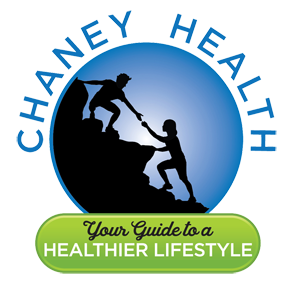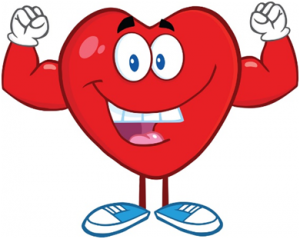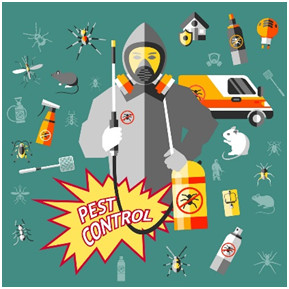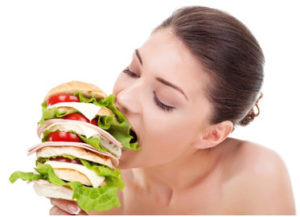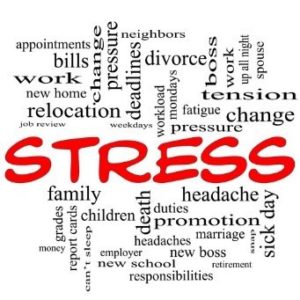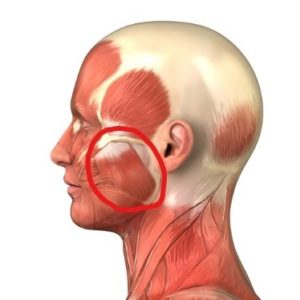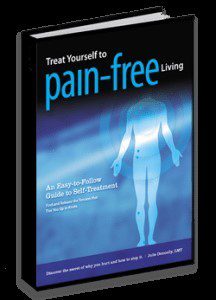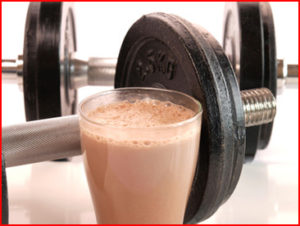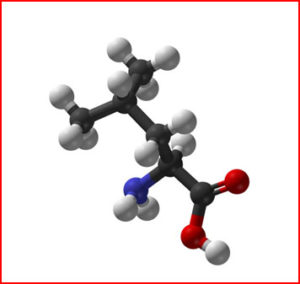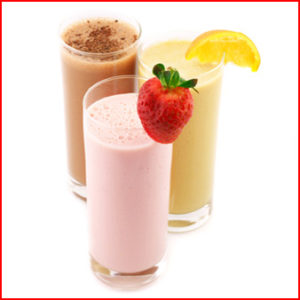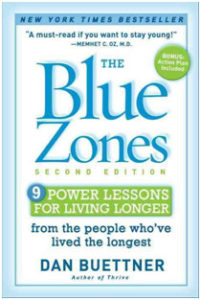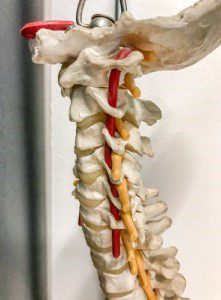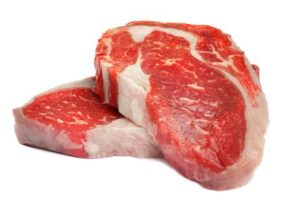Beautiful Skin Starts On The Inside
Author: Dr. Stephen Chaney
What to eat for healthy skin?
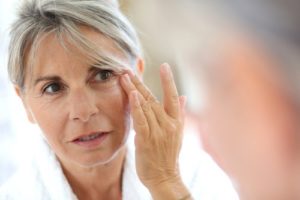 If you stare into the mirror and think you see your mother or your father staring back, you are not alone. Where did those lines…those crow’s feet…those wrinkles come from? If you are like most of us, you want to do something about it. Americans are expected to spend $11 billion on skincare in 2018.
If you stare into the mirror and think you see your mother or your father staring back, you are not alone. Where did those lines…those crow’s feet…those wrinkles come from? If you are like most of us, you want to do something about it. Americans are expected to spend $11 billion on skincare in 2018.
Great skincare products can work wonders, but are they enough? Are we forgetting something? The answer, of course, is yes. For truly beautiful skin we need to make sure that it also gets the nutrition that it needs. We need to feed it from the inside out.
That’s because skin cells form in the surface of the dermis, the lowest layer of our skin, and are pushed up, layer by layer, until they reach the surface. If you start out with healthy cells in your dermis, all your skincare regimen needs to do is to preserve the health of those cells as they rise to the surface.
Here are some suggestions for creating healthy and beautiful skin cells.
What to Eat For Healthy Skin – Avoid Inflammation
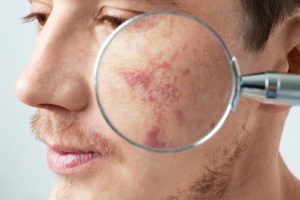 Like any other cell in the body, creating healthy skin cells starts with proper diet. I will cover nutrients below, but let’s start out by considering diet and inflammation. Some have gone as far as calling inflammation skin’s number one enemy.
Like any other cell in the body, creating healthy skin cells starts with proper diet. I will cover nutrients below, but let’s start out by considering diet and inflammation. Some have gone as far as calling inflammation skin’s number one enemy.
That may be going a bit far. However, inflammation is associated with many skin conditions such as acne, rosacea, eczema, and chronic dry skin, just to name a few. Inflammation also accelerates the aging process. It does that by increasing cortisol levels, which slows the wound healing process and leads to collagen breakdown. That, in turn, leads to wrinkled and sagging skin.
Inflammation of the outer layers of skin cells is cause by UV radiation. This is where a good anti-aging skincare regimen comes in. Inflammation of the lower layers of skin cells is caused by stress, lack of sleep, obesity, and poor diet, but let’s focus on the role of diet for this article.
Anti-inflammatory diets have become so mainstream that they now appear on reputable health organization websites such as WebMD, the Mayo Clinic, and the Cleveland Clinic.
So, what to eat for healthy skin? In a nutshell, an anti-inflammatory diet includes fruits and vegetables, whole grains, plant-based proteins (like beans and nuts), fatty fish, and fresh herbs and spices. Anti-inflammatory diets do not need to be extreme. For example, a recent study, L. Galland, Nutrition and Clinical Practice, 25: 634-640, 2010 , has shown that the Mediterranean Diet is anti-inflammatory.
Specifically, your diet should emphasize:
• Colorful fruits and vegetables. Not only do they help fight inflammation, but they are a great source of antioxidants and other nutrients important for a healthy skin.
• Whole grains. They are a good source of fiber, and fiber helps flush inflammatory toxins out of the body.
• Beans and other legumes. They should be your primary source of protein. They are high in fiber and contain antioxidants and other anti-inflammatory nutrients.
• Nuts, olive oil, and avocados. They are good sources of healthy monounsaturated fats, which fight inflammation.
• Fatty fish. Salmon, tuna, and sardines are all great sources of long-chain omega-3 fatty acids, which are incorporated into our cell membranes. Those long-chain omega-3s in cell membranes are, in turn, used to create compounds that are powerful inflammation fighters. Unfortunately, our oceans are heavily contaminated, so omega-3-rich fish are often contaminated with heavy metals and PCBs. Many experts recommend avoiding tuna and farm raised salmon completely and eating wild salmon no more than once or twice a month.
Walnuts, flaxseeds, and chia seeds are good sources of short-chain omega-3s. Those short-chain omega-3s are heart healthy, but it is unclear to what extent they reduce inflammation. The efficiency of their conversion to long-chain omega-3s that can be incorporated into cell membranes is only around 2-5%. If they fight inflammation, it is probably because they replace some of the saturated fats and omega-6 fats you might otherwise be eating (see the list of foods that increase inflammation below).
• Herbs and spices. They add antioxidants and other nutrients that fight inflammation. More importantly, they replace salt. Excess salt can cause you to retain water, which gives your face a puffy look.
In a nutshell, an anti-inflammatory diet should exclude highly processed, overly greasy, or super sweet foods, especially sodas and other sweet drinks.
Specifically, your diet should minimize:
 • Refined carbohydrates and sugary foods. These foods are often high in fat as well. They lead to weight gain and high blood sugar, both of which cause inflammation. Sugar also attaches to collagen and elastin, causing your skin to lose its elasticity.
• Refined carbohydrates and sugary foods. These foods are often high in fat as well. They lead to weight gain and high blood sugar, both of which cause inflammation. Sugar also attaches to collagen and elastin, causing your skin to lose its elasticity.
• Foods high in saturated fats. This includes fatty and processed meats, butter, and high fat dairy products. That’s because saturated fat causes inflammation.
• Foods high in trans-fats. This includes margarine, coffee creamers, and any processed food containing partly hydrogenated vegetable oils. Trans-fats are very pro-inflammatory.
• French fries, fried chicken, and other fried foods. They used to be fried in saturated fat and/or trans-fat. Nowadays, they are generally fried in omega-6 vegetable oils. A little omega-6 in the diet is OK, but Americans get too much omega-6 fatty acids in our diet. A high ratio of omega-6 to omega-3 fatty acids is pro-inflammatory.
• Foods you are allergic or sensitive to. Eating any food that you are sensitive to can cause inflammation. This comes up most often with respect to gluten and dairy because so many people are sensitive to one or both. However, if you are not sensitive to them, there is no reason to exclude whole grain gluten-containing foods or low fat dairy foods from your diet.
What to Eat For Healthy Skin – Nutrients
Like any other cell in the body, healthy skin cells need a proper balance of essential vitamins, minerals, and protein. If you are a vegan or eat a mostly plant-based diet, you might be low in nutrients like vitamin B12, iron, calcium and protein. If you eat a typical American diet, you may be deficient in multiple nutrients. If you suspect, for any reason, that your diet may be short of some essential nutrients, a quality multivitamin and plant-based protein supplement can help you fill the gaps.
In addition, many Americans do not get enough of these nutrients that are important for healthy skin:
What to eat for healthy skin concerning nutrients?
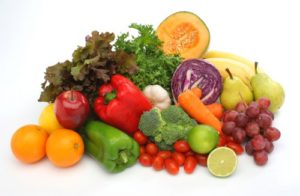 Carotenoids. Beta-carotene and related carotenoids are precursors to vitamin A, which is important for maintaining a healthy skin. They are also important antioxidants. You can get the full spectrum of carotenoids from a diet rich in multicolored fruits and vegetables, but 43% of Americans are not getting the recommended amount of these nutrients from their diet. For that reason, I often recommend that people look for supplement that provides the major carotenoids like beta-carotene, lycopene, lutein, and zeaxanthin.
Carotenoids. Beta-carotene and related carotenoids are precursors to vitamin A, which is important for maintaining a healthy skin. They are also important antioxidants. You can get the full spectrum of carotenoids from a diet rich in multicolored fruits and vegetables, but 43% of Americans are not getting the recommended amount of these nutrients from their diet. For that reason, I often recommend that people look for supplement that provides the major carotenoids like beta-carotene, lycopene, lutein, and zeaxanthin.
Vitamins C and E. Vitamin C is required for the synthesis of collagen, which keeps the skin firm and supple. Both vitamin C and E are important antioxidants that help fight free radical damage caused by pollution, smoking, food additives, and sun exposure. Free radicals are a major cause of skin aging. In today’s world, we are exposed to free radicals from many different sources. 39% of Americans don’t get enough vitamin C from their diet, and 88% don’t get enough vitamin E, so extra vitamins C and E are important to help prevent our skin from aging prematurely.
Omega-3 fatty acids. As mentioned above, omega-3 fatty acids exert a powerful anti-inflammatory effect. They are also an important component of skin cell membranes, helping to keep the skin moist and supple.
Unfortunately, as I have reported recently, most of us are woefully deficient in omega-3s. For example, one study reported that 90% of Canadian women of child bearing age have suboptimal omega-3 intake. Another study showed that US women of child-bearing age are getting only around 20% of the recommended level of omega-3s from their diet. Finally, a recent study has shown that most Americans have very low tissue levels of omega-3 fatty acids. In fact, our tissue levels of omega-3s are among the lowest in the world.
It is clear we should be getting more omega-3s in our diets. Eating more omega-3-rich fish would seem like an obvious recommendation. However, as mentioned above, our oceans are polluted. Fish are often contaminated with heavy metals or PCBs. For that reason, I often recommend a high-purity omega-3 supplement to make sure we get enough omega-3s in our diet.
Polyphenols. Polyphenols are good antioxidants. In addition, resveratrol and related polyphenols from muscadine grapes activate cellular anti-aging genes. Those genes, in turn, activate DNA repair and inhibit the cellular stress response. We are just beginning to learn about the role of these important phytonutrients in keeping our skin young and healthy.
The Bottom Line
If you want healthy, younger looking, skin, a good skin care regimen is only part of the solution. You also need a diet that gives your skin the nutrition it needs from the inside out.
1) Inflammation is your skin’s # 1 enemy, so good nutrition starts with an anti-inflammatory diet.
2) An anti-inflammatory diet emphasizes:
• Colorful fruits & vegetables
• Whole grains
• Beans and other legumes
• Nuts, olive oil & avocados
• Fatty fish
• Herbs and spices
3) An anti-inflammatory diet minimizes:
• Refined carbohydrates and sugary foods
• Foods high in saturated fats
• Foods containing trans- fats
• Fried foods
• Foods you are allergic or sensitive to
4) We may not be getting enough of certain nutrients that are particularly important for a healthy skin. They are:
• Carotenoids
• Vitamins C & E
• Omega-3 fatty acids
• Polyphenols
For more details, read the article above.
These statements have not been evaluated by the Food and Drug Administration. This information is not intended to diagnose, treat, cure or prevent any disease.
 A calf cramp is caused by several different conditions, such as dehydration and mineral deficiency. These each need to be addressed to prevent future calf cramps, but when your calf spasms wake you with a jolt at night or send you crashing to the ground in agony, you need a solution NOW!
A calf cramp is caused by several different conditions, such as dehydration and mineral deficiency. These each need to be addressed to prevent future calf cramps, but when your calf spasms wake you with a jolt at night or send you crashing to the ground in agony, you need a solution NOW! Julie Donnelly is a Deep Muscle Massage Therapist with 20 years of experience specializing in the treatment of chronic joint pain and sports injuries. She has worked extensively with elite athletes and patients who have been unsuccessful at finding relief through the more conventional therapies.
Julie Donnelly is a Deep Muscle Massage Therapist with 20 years of experience specializing in the treatment of chronic joint pain and sports injuries. She has worked extensively with elite athletes and patients who have been unsuccessful at finding relief through the more conventional therapies.